Federal funding for infrastructure projects has surged in recent years. Since 2021, Congress has allocated more than $550 billion for rebuilding and expanding critical infrastructure across the United States. From transportation networks to broadband access and clean water systems, the scope of work is substantial and has created significant opportunities for the construction industry.
Due to this spending growth and a persistent inability to recruit and train the next generation of construction workers, the construction industry is facing a major worker shortage. Associated Builders and Contractors—a national construction industry trade association—estimates that the industry will require an additional 454,000 new workers on top of normal hiring to meet the booming demand in 2025.
However, despite the substantial need for more construction professionals, elevated home prices and an inadequate homebuilding pace are making it difficult for construction workers to afford to purchase a home in the cities where they work.
Trends in Construction Worker Earnings
Real earnings for construction workers have declined more than 10% after peaking in 2020
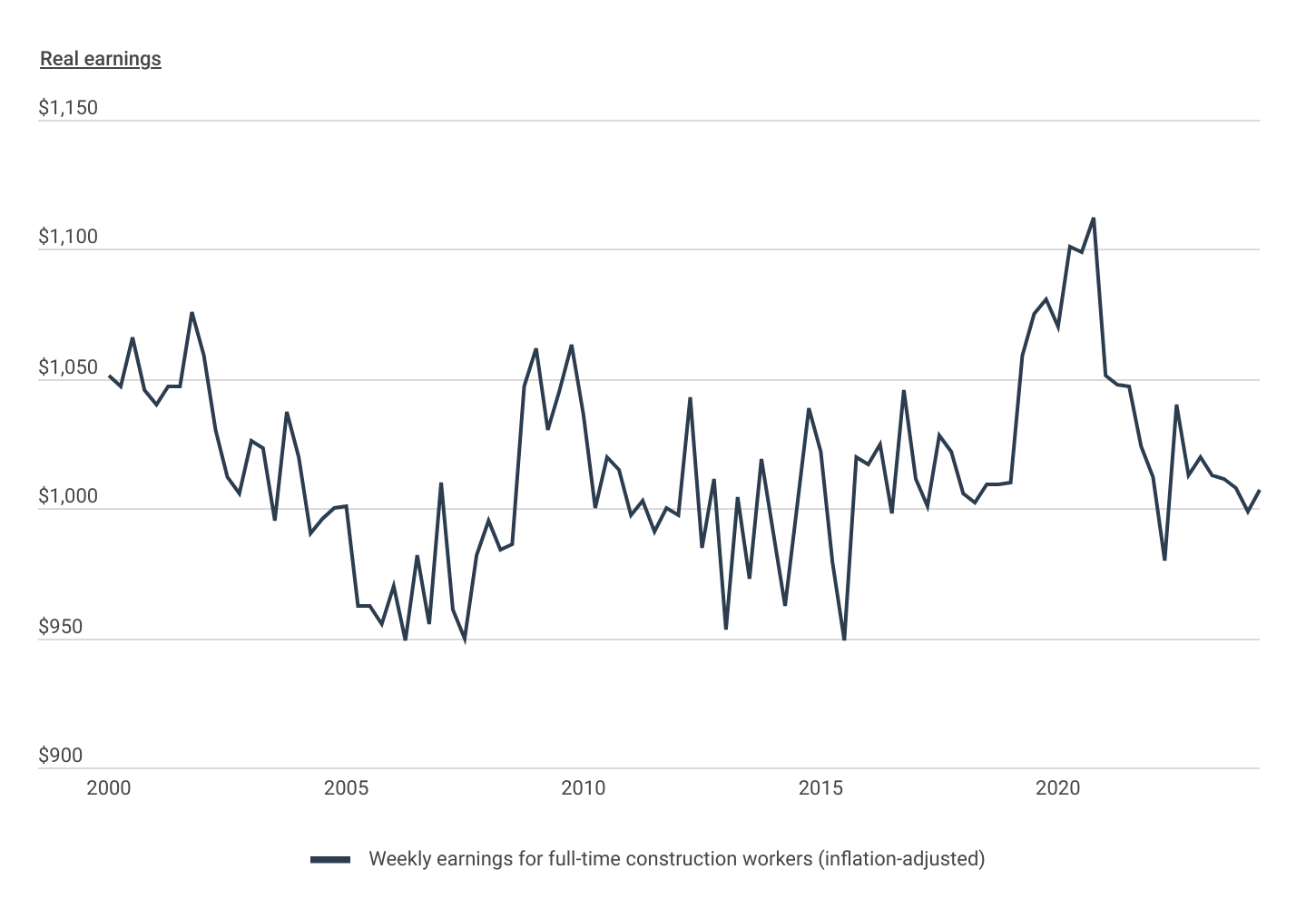
Source: Construction Coverage analysis of U.S. Bureau of Labor Statistics data | Image Credit: Construction Coverage
Compounding the issue, wages for construction workers have not kept pace with recent inflation. As of April 2024, the average weekly wage for full-time construction workers stood at $1,007, after adjusting for inflation. This marks a decline of over 10% from the previous 20-year high of $1,112 recorded in late 2020.
Trends in Monthly Mortgage Payments
Mortgage payments remain near record highs after skyrocketing during COVID
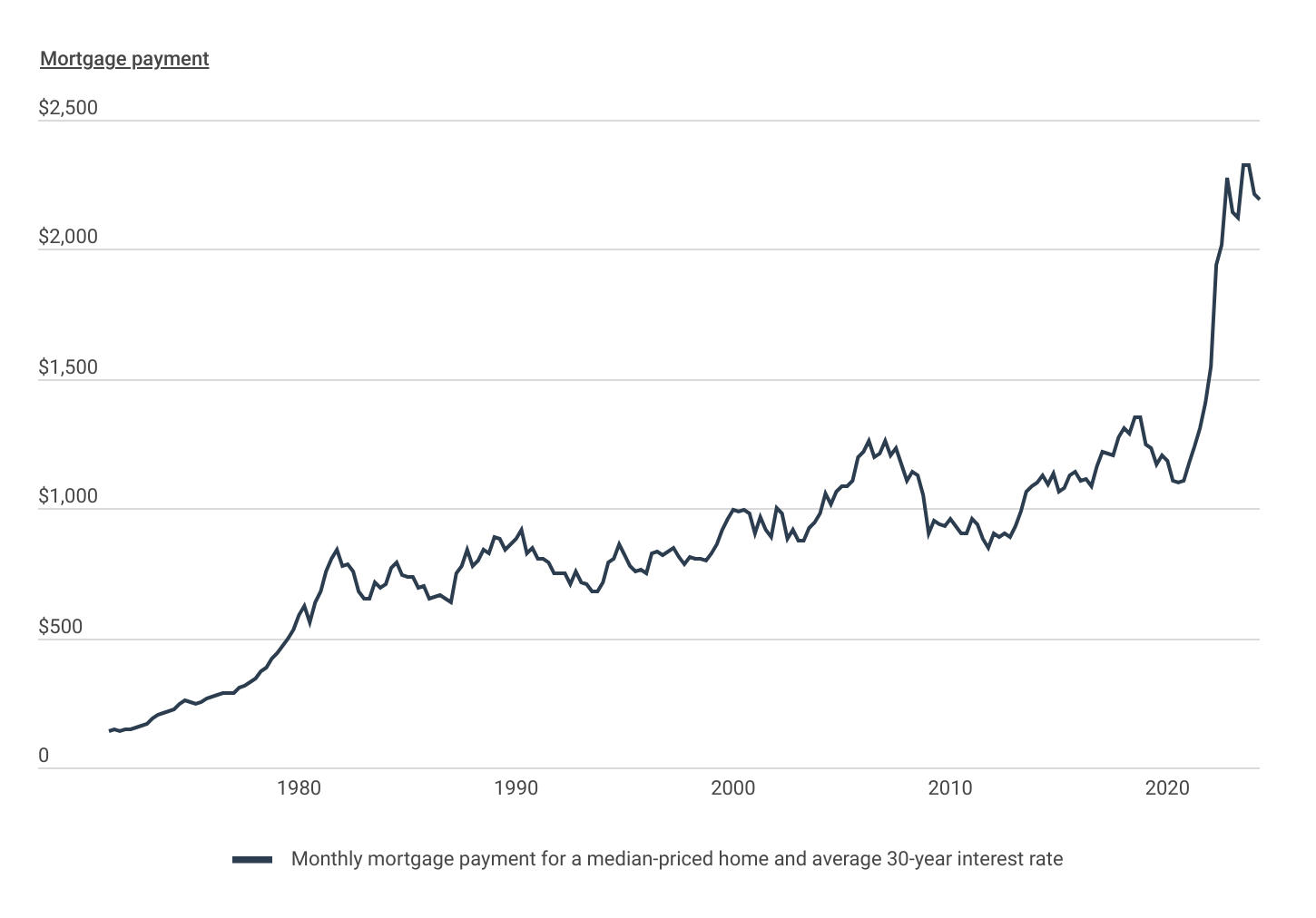
Source: Construction Coverage analysis of U.S. Census Bureau, U.S. Department of Housing and Urban Development, and Freddie Mac data | Image Credit: Construction Coverage
At the same time, the housing market has become significantly more unaffordable over the past four years. Increased demand for homes during the pandemic due to record-low mortgage rates, remote work, and stimulus payments, coupled with low inventory, caused home prices to skyrocket. The median home sales price was over $412,000 as of Q2 2024, up 30% from just four years ago. Due to actions by the Federal Reserve to combat inflation, mortgage interest rates also rose substantially during this period and remain elevated today. Lofty home valuations and higher interest rates have caused payments on new mortgages to climb. The estimated monthly payment for a median-priced home is $2,193 as of April 2024, nearly double the monthly payment from July 2020, and an amount difficult for many American construction workers to afford.
Weekly Hours Needed for Construction Workers to Afford Homes
CA construction workers would need to work over 100 hours per week to afford the median-priced home
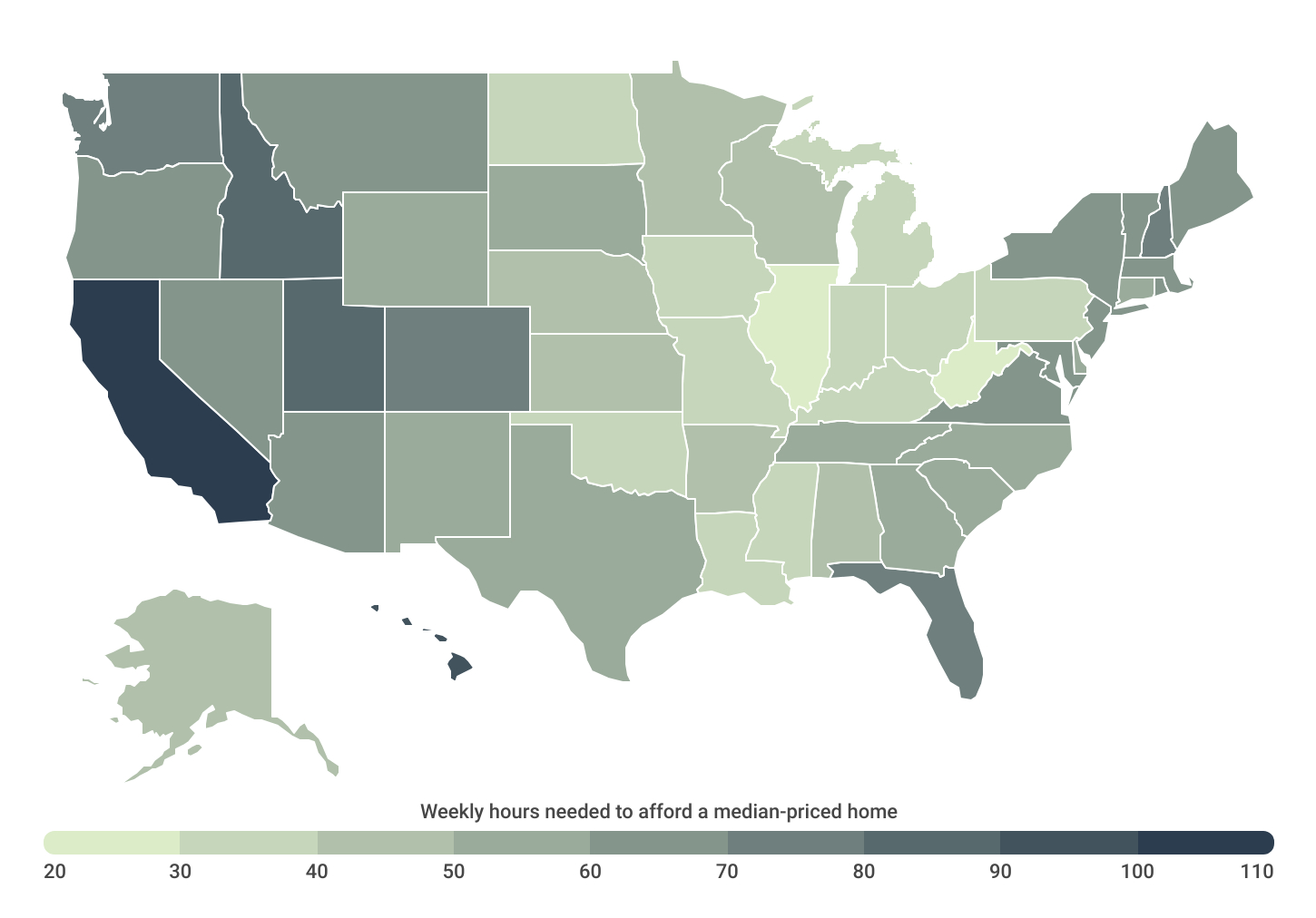
Source: Construction Coverage analysis of U.S. Bureau of Labor Statistics and Zillow data | Image Credit: Construction Coverage
Inflated home prices in many cities mean that the workers who build homes often cannot afford to buy them. Indeed, California construction workers would have to work 101 hours per week to afford a median-priced home in their home state, more than double a typical 40-hour work week. This calculation assumes that a worker would spend no more than 30% of their income on housing, a common home affordability rule. Construction workers in Hawaii (90 hours), Utah (85 hours), and Idaho (80 hours) would also have to work over double the standard work week to manage the monthly mortgage payments for a median-priced home. At the other end of the spectrum, in West Virginia home prices are affordable enough—and construction median wages are high enough—that a construction worker would only have to work 28 weekly hours to be able to afford a median-priced home.
Similar trends hold at the metro level, where perhaps not surprisingly, metros in California stand out as being some of the most unaffordable in the country. Even though locations like San Jose, San Francisco, San Diego, and Los Angeles all offer above-average wages, homes there are so much more expensive than average that the typical construction worker would need to work the equivalent of at least three full-time jobs to afford one. At the opposite end of the spectrum, locations in America’s Rust Belt, such as Pittsburgh, Cleveland, and St. Louis, offer good-paying construction jobs and below-average home prices, making these locations highly affordable for a person in the trades.
Below is a breakdown of how many hours construction workers would need to work to afford a home in their area for the top and bottom metros and states. The analysis was conducted by Construction Coverage, a website that provides construction software and insurance reviews, using data from the U.S. Bureau of Labor Statistics, Zillow, and the U.S. Census Bureau. For the full analysis, see the original story Cities Where Construction Workers Would Have To Work the Longest Hours To Afford a Home on Construction Coverage.
The Most Unaffordable Large Metros for Construction Workers
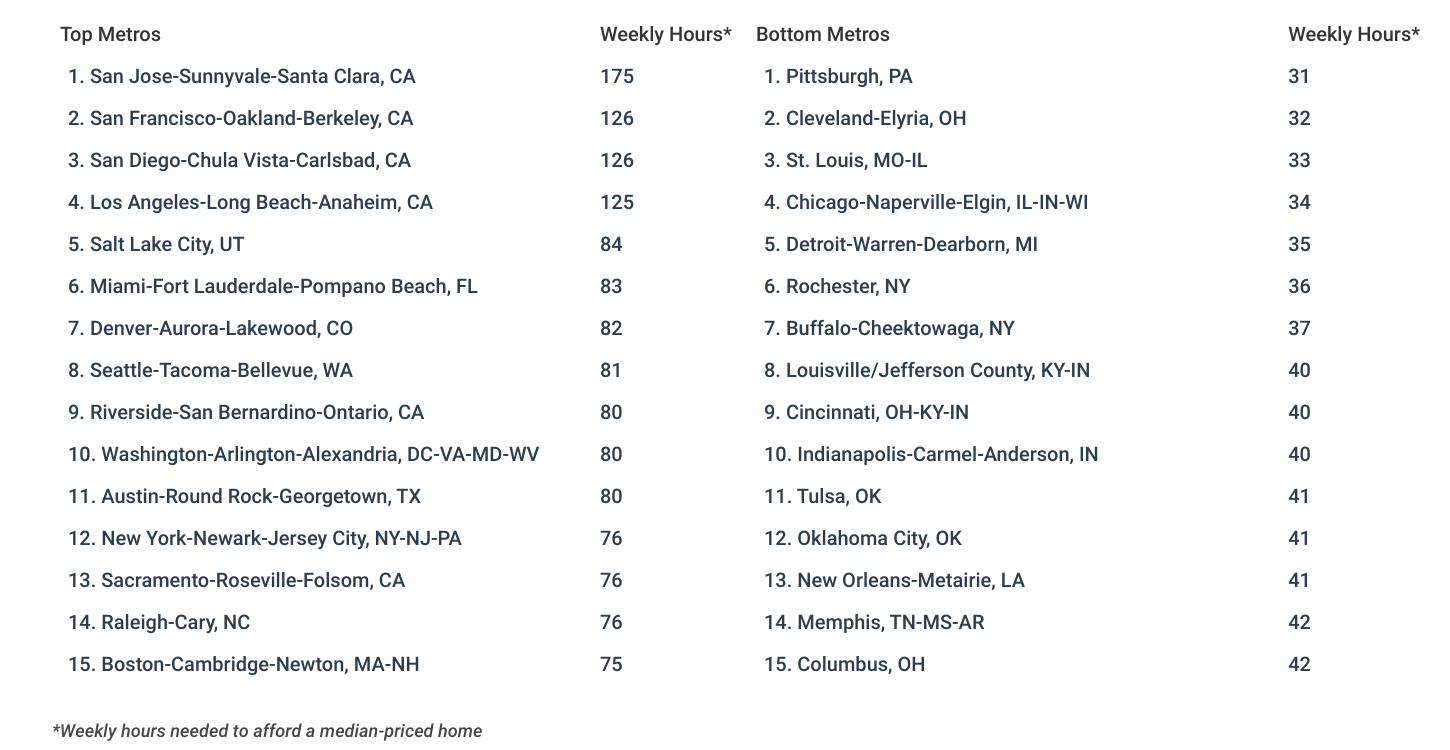
The Most Unaffordable States for Construction Workers
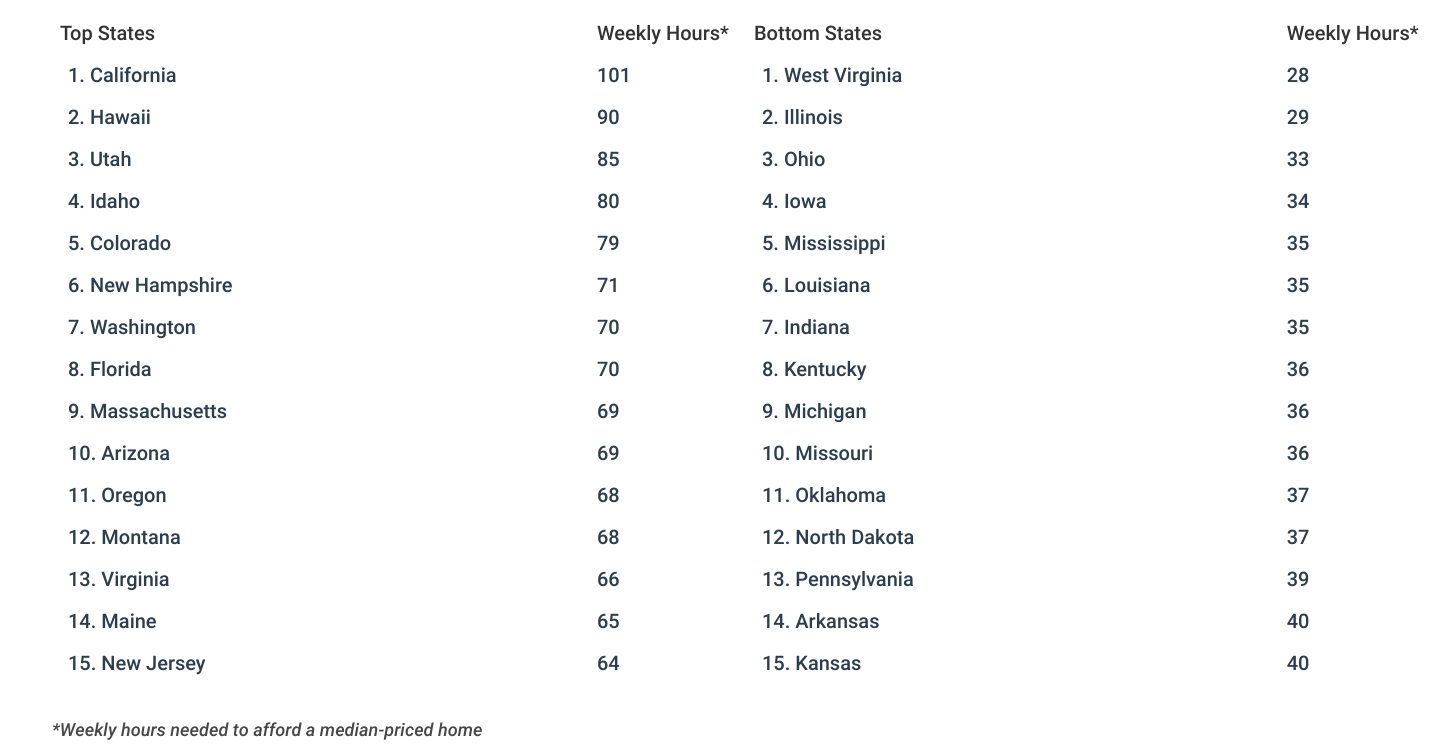
Methodology

Photo Credit: Tong Stocker / Shutterstock
To find the metropolitan areas where construction workers would have to work the longest hours to afford a home in their city, researchers at Construction Coverage analyzed the latest data from the U.S. Bureau of Labor Statistics’s 2023 Occupational Employment and Wage Statistics, the U.S. Census Bureau’s 2022 American Community Survey, and Zillow’s Zillow Home Value Index (ZHVI) data, a measure of typical home value. The researchers ranked locations according to the number of weekly work hours needed for a construction worker earning the median hourly wage to afford a median-priced home in their location. For the purposes of this analysis, it was assumed that construction workers do not spend more than 30% of their wages on their monthly mortgage payment. The mortgage payment for a median-priced home was calculated assuming a 30-year fixed rate mortgage, a 20% down payment, and a 6.73% interest rate—the U.S. average as of August 2024. The researchers also calculated the median-priced home was calculated using Zillow’s ZHVI value from June 2024. In the event of a tie, the location with the larger median hourly wage for construction workers was ranked higher.
To improve relevance, metro areas were grouped into the following cohorts based on population size:
- Small metros: less than 350,000
- Midsize metros: 350,000–999,999
- Large metros: more than 1,000,000
For complete results, see Cities Where Construction Workers Would Have To Work the Longest Hours To Afford a Home on Construction Coverage.
